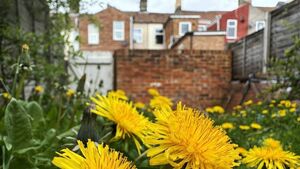Living Greener: Make peace not war with dandelions

Dandelions are a good source of Vitamin A, Vitamin C, Calcium, Iron and especially Vitamin K
FOR some reason, when many people acquire their own suburban-style homes and lawns, they feel they must declare war on dandelions.
They spray poison on the flowers, dig the roots out with hoes, and otherwise strive to make the space around their house featureless.
A few suburbanites I know have turned some of their property into food gardens, and good for them – but they could have also eaten the dandelions.
Dandelions are a good source of Vitamin A, Vitamin C, Calcium, Iron and especially Vitamin K – 100 grams have more than ten times your daily needs.
Unlike many wild foods that take a long search, dandelions are found in almost every garden, green and field.
While many wild plants require special training to identify and discriminate from similar-looking poisonous plants, dandelions can be readily identified by every schoolchild.
In theory, the whole plant is edible, but new green leaves are best, before they form their distinctive saw-tooth shape (“lion-teeth” or in French, dent-de-lion).
After that, they are still edible but quite bitter. They wilt quickly, so gather as many as you can and then drop them into cold water to keep them crisp.
Even the young leaves have a slight bitter flavour, but if that bothers you mix them with lettuce or corn salad, or other edible weeds like fat hen, jack-by-the-hedge, linden, hawthorn shoots, daisies and clover.
Spring is the time when edible leaves grow in abundance all around us, so this is your chance to mix up some wild salads. You could also make the dandelions more palatable by mixing them with apples and nuts, or in an egg salad or potato salad.
Leaves could be picked a bit older if they are to be cooked, either sautéed into a dish like spinach or mixed into scrambled eggs or quiche.
Very mature leaves should probably not be eaten except in an emergency. Of course, only pick dandelions from land you know has not been treated with pesticides, and away from any car traffic.
I cut the yellow flowers and make them into fritters. After you have gathered and washed a large bowl of flowers, cut off the base where the threadlike petals inside turn white.
Take the yellow part and drop it into a batter made from equal parts flour and milk. Mix the flowers in until it is thick, perhaps with some oats for texture or some chives or other herbs for flavour. Fry the mixture like a pancake until golden brown on both sides. This is a general recipe – play with the amounts until you find your taste.
Some people make the leaves into dandelion jam, and dandelion roots can be stir-fried like parsnips or roasted and ground into a coffee substitute.
I roasted mine at 200 centigrade for about 30 minutes, but different sizes of roots will need different times.
You probably don’t want to go to all the work of uprooting dozens of roots, but roasting and then grinding several of them and adding them to coffee gives it a nice extra flavour, like chicory.
You can also make dandelion flowers into wine, in this sample recipe. Put three litres of open yellow flowers into a large pot and pour four litres of boiling water over them. Cover the crock with cheesecloth and let it sit at room temperature for three days. Then squeeze all the juice out of the flowers, throw them away and save the liquid.
Put the liquid into a big pot and add 1.5 litres of sugar, three lemons – halved and squeezed, juice and flesh together – and three oranges chopped and squeezed the same way. Alternately, I used 100ml of lemon juice last time and 50g of grated ginger, and that gave it a nice tang.
Boil the resulting mixture for 30 minutes with a top on the pot, then turn off the stove and let cool. When it cools to blood temperature, add yeast, cover and let sit for two weeks or until it stops bubbling. Filter through cheesecloth or a coffee strainer into a carboy and let ferment for a few months.
We spend millions every year ridding our lawns of flowers and plants that could be eaten, in favour of flat sheets of grass that have no function other than to require massive infusions of drinking water and pesticides.
We can’t turn every college green, public park and lawn into a vegetable patch overnight, but we can stop killing off the food that grows there naturally, for free.





